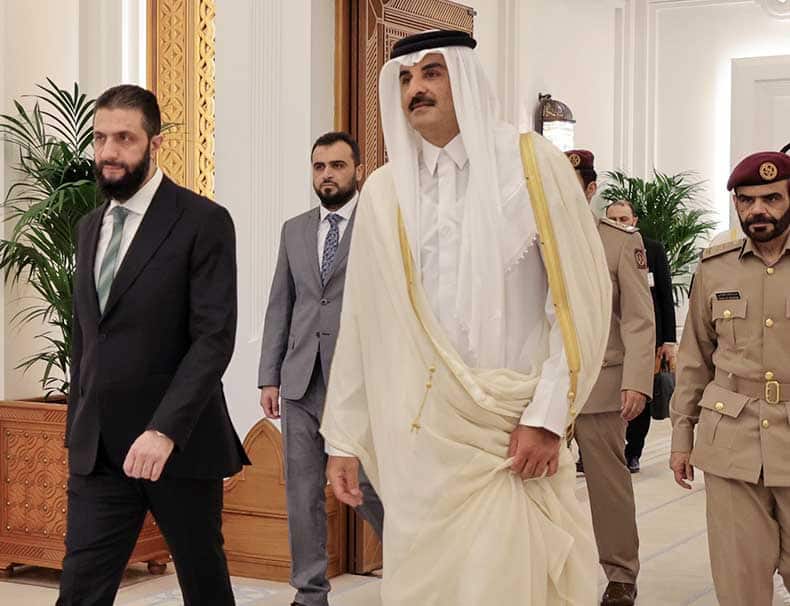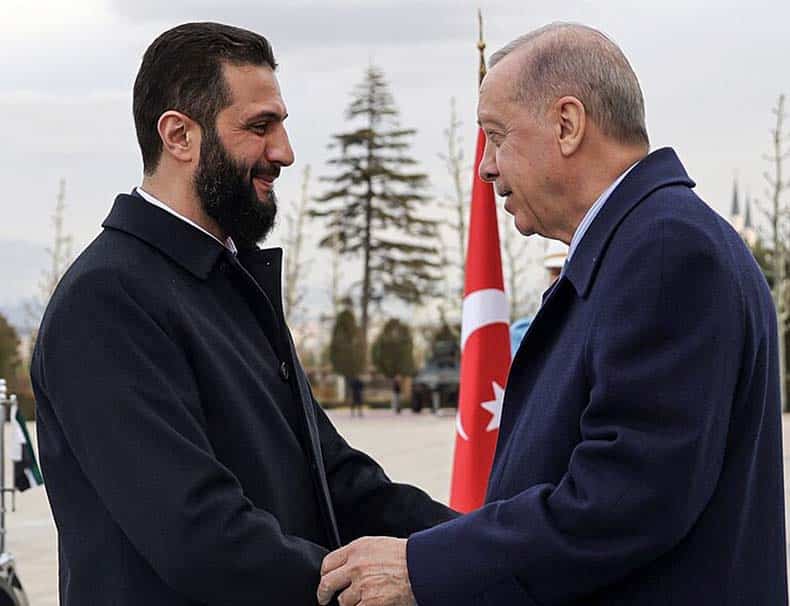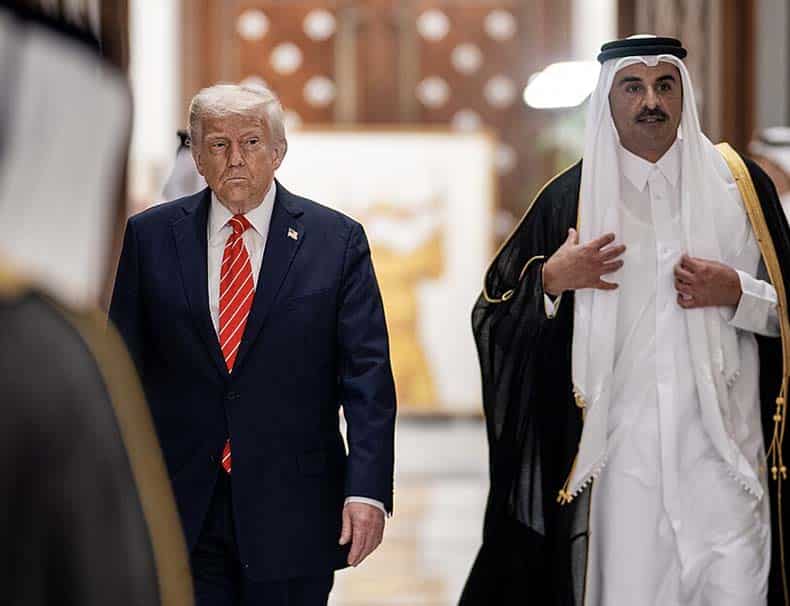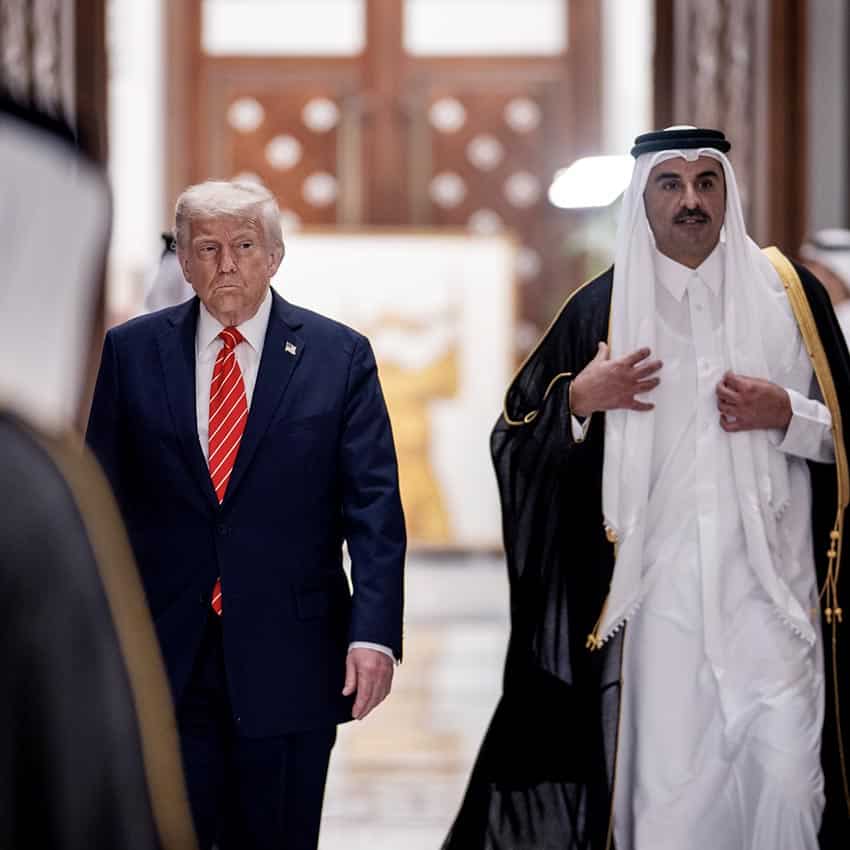Since the start of Operation “Guardian of the Walls,” Qatar has become the central player in the diplomatic arena between Israel and Hamas. It presents itself as an “objective” mediator, a vital partner in humanitarian efforts, and even enjoys the support of Western countries. In reality, however, Qatari involvement reveals a far more troubling truth: not neutral mediation, but a consistent policy of escorting, funding, and legitimizing a murderous terrorist organization.
What is Qatar’s fundamental role in deceiving Israel and the U.S. regarding the hostage deal? How did global public opinion become influenced by the “starvation in Gaza” campaign that Qatar cunningly, cleverly, and forcefully promoted? And what must the Israeli government do in response to this maneuver? In this article, we will examine the depth of Qatari influence—financial, ideological, and media-related—and propose a plan to remove it from this dangerous equation.
In 2016, Hezbollah leader Hassan Nasrallah admitted that Iran is the organization’s funder and patron—paying salaries, distributing food, and supplying weapons and missiles—in other words, the Pied Piper driving all the rats (Hamas, Hezbollah, and the Houthis). Today, looking at its conduct in much the same way, one can say that the Qatari emirate has been the patron funding and operating Hamas for years. It was Qatar that established the “Hamad State Project” on the ruins of Gush Katif, making it clear that it holds the reins.
Allowing a country like Qatar to serve as mediator in a hostage deal is like letting a father be the judge in the trial for the murder, rape, and massacre that his son (the Hamas terrorist organization) committed for years—including the killings that broke records of cruelty on October 7—and then allowing him to emerge as the victim, to be compensated with a false and evil Palestinian state. Such a state is supported by enlightened countries like France, Britain, Canada, and many others, which is precisely why now is the time to act and remove “Judge Qatar” from the trial of her “son,” Hamas, and his partners in the axis of evil and cruelty.
To do this, Israel must find a way to get U.S. President Donald Trump to put Qatar in its place and also to call Turkish President Recep Tayyip Erdoğan to order. Erdoğan received “certification” to serve as the sultan of the renewed Islamic Caliphate capital in Istanbul from Sheikh Dr. Yusuf al-Qaradawi—the malevolent house preacher of Al Jazeera and Egyptian terrorist who the Emir of Qatar granted refuge. Trump, incidentally, had already called Erdoğan to order in his previous term and even banned the sale of F-35 fighter jets to Turkey.
Already at the start of his first term in the White House, Trump sent Qatar a hint that regional states see it as a funder of terror operations beyond its borders—whether through support for Iran or terrorist organizations. This hint came after Qatar paid more than one billion dollars to security elements in Iran and to Jabhat al-Nusra in Syria to release members of the royal family who had been kidnapped in Iraq during a hunting trip.
This deal was also one of the central factors in the severe crisis between Qatar and Saudi Arabia, along with other Arab states—including the UAE, Bahrain, Egypt, Yemen, and the eastern government in Libya—which cut ties with it as a result. The move aroused concern among Saudi Arabia and its allies that Qatar, in practice and a sophisticated manner, was cooperating with two of the elements undermining regional stability—Shi’ite Iran and Sunni jihadist organizations.
At the head of Jabhat al-Nusra once stood our acquaintance al-Julani, now known as Ahmad al-Sharaa, the new president of Syria—the jihadist in a suit—who said several years ago that after Damascus is liberated, Jerusalem will also be liberated. This follows the same model used by the first caliphs, Muhammad’s successors, in conquering the Syrian-Palestinian province of the Byzantine Empire between 634–640 CE—from Damascus to Jerusalem, and from there to the Byzantine capital Caesarea (today’s Tel Aviv).

The Illusion of Hamas’ Flexibility
Qatar (like Turkey) also serves as a haven for Hamas leaders—those brutal terrorists whose hands are stained with the blood of thousands of Jews and Israelis, and who were in on the decision to launch the October 7 massacre. Therefore, if Iran knew what Hamas was planning, it is even more likely that Qatar knew.
Qatar was the one to echo the idea of “Palestine from the Jordan River to the sea” through its powerful propaganda machine—Al Jazeera in Arabic and English. This propaganda machine is known in Islamic terminology as da’wa (proselytizing) or jihad bil-qalam (“jihad of the pen” of the journalist—the modern TV correspondent). Not for nothing are many of the station’s reporters in Gaza Hamas members who were themselves terrorists, describing the organization’s terror attacks as “heroic.”
The Qatari emirate is also the financial and ideological “aircraft carrier” of the Islamic axis of evil, from jihadist terrorist organizations, ISIS, and al-Qaeda-like, to Shi’ite Iran, and from al-Julani to Erdoğan. This is a familiar practice of theirs, just like the campaign to restore the Palestinian issue to the center of public discourse, which underpinned the World Cup, culminating in the Emir of Qatar draping a robe over Lionel Messi just before he lifted the trophy – and like the starvation campaign built up over several months.
Cleansing Hamas in global public opinion from the horrors of October 7 is also one of Qatar’s achievements—along with presenting itself as an honest, reliable, and impartial mediator, and relying on it during the long, Sisyphean, and mainly fruitless negotiation process.
In this process, during the talks for the most recent prisoner deal, Qatar and Hamas toyed with Israel, the U.S., and the world for many months, making everyone believe that the terrorist organization was ready for compromise and resolution, while the Israeli side was the one rejecting the Wittekoft outline.
Even the Trump administration tended to believe that Hamas was showing flexibility and seeking a hostage deal, while Israel was entrenched in its position and placing numerous obstacles. This was the fruit of the propaganda of Qatar’s emissaries worldwide—the Muslim and Arab immigrants in the U.S., Canada, Australia, and France; the liberal-progressives and some nationalists in Europe; the Arab and Muslim public in Jordan, Egypt, Turkey, Morocco, and Algeria; and supporters of President Lula in Brazil, alongside students in the U.S. who studied at academic institutions funded by Qatar, chiefly Harvard and Columbia Universities.
Qatar dominates the global gas industry and is the “energy kettle” of many countries, including in Europe. The same is true for many other sectors, mass influence tools, and significant assets, such as football clubs and airlines. All these make it the most influential country over the citizens of the world in various fields, by a significant margin over any other state.

Complete Demilitarization and Building the New Gaza
Now is the time to awaken the American administration, and this is precisely the moment to eradicate Hamas rule—Qatar’s and Iran’s creation. At the same time, the U.S. must be persuaded to extradite the Hamas leaders residing in Qatar to stand trial as wanted suspects for committing acts of terror against Israel, U.S. citizens, and humanity. It is of utmost importance to clarify that if it does not do so, the U.S. will have to act decisively, together with Israel, to take revenge on those senior terrorist officials in the same way that Hamas’ financier, al-Mabhouh, was assassinated in Doha.
In the post-Qatari influence era, Hamas must leave the Gaza Strip. At the same time, the civilians who remain will undergo Islamic re-education in the style of Islam in Albania, Bahrain, and the Emirates.
Israel will evacuate Gazans from residential areas and build for them a safe zone in the southern Strip, between Khan Yunis and the eastern neighborhoods of Rafah. Within it will be located American aid centers, from which companies protected from Hamas’ terror will provide humanitarian supplies and food to residents.
The IDF will secure the demilitarized compound, while the rest of the Strip will be brought under control through a bold and determined operation that will encircle and flank population centers in the manner of Operation Defensive Shield. The IDF will also broadcast evacuation orders to residents and take measures to “encourage” them to leave by all means, including the use of fire belts and cutting off electricity and cellular internet. At the same time, there will be a systematic and rapid destruction of terrorist infrastructure and targeted aerial elimination of terrorist cells that choose not to surrender and lay down arms.
Israel must completely demilitarize the Strip, resolutely and persistently, while carrying out two critical actions in parallel: first—placing the emigration encouragement mechanism in the center of the safe zone and working to transfer refugees to Ramon Airport and from there to destination countries; second—establishing individual farmsteads in the northern Strip, similar to the state’s activities in Judea and Samaria, to minimize Hamas’ territorial control.
The five kilometers surrounding the Strip from the north and east should become the jurisdiction of a new regional council called “New Gaza – Gaza Nova,” with its central city named Kiryat Nova, reminiscent of Neve Dekalim, the former capital of Gush Katif, and established opposite the ruins of the party where hundreds of young people were massacred on October 7.
All agricultural lands in these areas should be transferred to the surrounding regional councils in the Gaza periphery, and greenhouse farming, which flourished in Gush Katif before the disengagement, should be revived. The expanded Philadelphi Route must remain a buffer zone, preventing the establishment of an Arab-Islamic entity in the Strip.
When the residents who remain in the Strip abandon the dream of Israel’s destruction and recognize its sovereignty, and when the remaining Hamas supporters and others emigrate from the Strip, it will no longer pose a threat to Israel. With the destruction of Hamas’ power center, its removal from its civil status as ruler of the Strip, and the transfer of the civilian population to the responsibility of the American aid mechanism, Hamas’ status in the Strip will be fundamentally shaken, and its terror arm will cease to exist.
From Axis of Evil to Axis of Prosperity
And what about the other terror fronts? In Judea and Samaria, there must be a demand to change the content of the Palestinian education system and to annex the Israeli settlement areas, open areas, and main roads in Area C, as a step continuing the security concept of the late Prime Minister Yitzhak Rabin, who, when signing the Oslo Accords, kept these areas under Israel’s sole responsibility. The ultimate goal should be to promote Israeli control over the open areas and Palestinian civil control in the Arab communities, centered on recognition of Israeli sovereignty over the area between the Jordan River and the sea.
As for dealing with hostile elements within Israel, those Arab movements supporting Hamas’ struggle under the guise of supporting Gaza residents must be investigated with caution. These investigations should be conducted without fear of violent outbreaks, and if such occur, they should be dealt with firmly. Today, Israel is more prepared than in the past to handle racist-nationalist riots, such as those of Operation Guardian of the Walls and the October riots.
Another front requiring action is that of the Houthis, who continue to launch missiles toward Israel. Now is the time to strike them cleverly at their weak points, such as the main roads connecting the mountainous provinces under their control. Such action would weaken the land passage between the different tribal coalition areas supporting the Houthis, allowing their rivals—chiefly the legitimate Yemeni government operating from Aden, the southern capital—to strike them separately. In addition, the qat-growing areas concentrated in the Houthi provinces of Sana’a, Saada, and Dhamar must be targeted, thereby harming the enormous revenues it generates for the Houthi economy and undermining their civil grip.
In our immediate region, action must be taken to prevent Erdoğan from providing military aid to al-Julani, to protect minorities in Syria, to demilitarize the tri-border area with Israel and Jordan, to bring about Hezbollah’s isolation and weakening, and to establish an “Axis of Prosperity” through regional strength. Such a land-based prosperity axis would run from India in the east, westward to Israel, and from there to Greece and Cyprus. It would weaken the power of Iran’s energy-based Axis of Evil, as well as the axis led by Qatar, Erdoğan, and the Sunni jihadists.
A strong Israel means a strong America, and it is good that the government is working through diplomatic channels to expose Hamas’ actions—a significant effort led by the foreign minister and his office. Prime Minister Benjamin Netanyahu and the cabinet must make a bold decision to launch a series of decisive actions that will lead to the defeat of the axes of evil and the establishment of Israel in the region as a senior partner in the Axis of Prosperity.

<div class=”publication-footer”>Dr. Yechiel Shabi is a research fellow at ICGS, Israel Center for Grand Strategy, a lecturer on crisis management at the Department of Political Science, Bar-Ilan University, and a senior strategic advisor and expert on the Middle East affairs.
Idan Ben Porat is an analyst and strategic consultant.</div>






